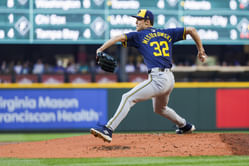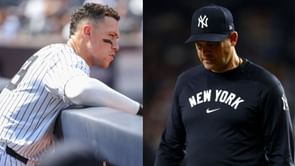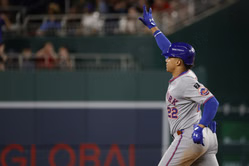
Baseball is a sport rich in history and tradition, often referred to as America’s pastime. Played on a field shaped like a diamond, the game features two teams of nine players who alternate between batting and fielding. The goal is to score runs by hitting a pitched ball with a bat and subsequently running around four bases arranged in a square.
The match unfolds over nine innings, each split into two halves - the top half for the visiting team to bat and the bottom half for the home team. Baseball encompasses numerous detailed rules and strategies that enhance its depth. These regulations cover everything from permissible pitches thrown by pitchers to how batters can legally move around the bases. Understanding these is key to appreciating the complexities of baseball and its unique plays and situations, one of which is the “3-foot line” rule that governs a batter’s path to first base.
3-foot line in baseball
The 3-foot line in baseball, often referred to as the "runner's lane" or "baseline," designates an area that clarifies whether a runner is legally moving toward first base. This line originates midway between home plate and first base, extending 45 feet down the first baseline until it meets the bag. It creates a three-foot-wide pathway parallel to the first baseline, situated within foul territory.
The main function of this 3-foot line is to prevent interference with a fielder's attempt to catch a throw at first base. According to official regulations, when advancing towards first base during a live play, runners must remain within the designated lane. If they venture outside and hinder the fielder’s ability to make a catch, they can be declared out for interference, even if they reach the bag before the throw.
The rule helps maintain a fair and clear path for the defense to execute plays, especially during close plays at first base. Exceptions occur if the runner’s last step takes them out of the lane as they reach for the base or if no play is being made at first base.
What is the 3-hole in baseball?
In baseball, the term "3-hole" designates the third spot in the batting lineup. It is frequently referenced within baseball jargon to identify where a team’s most consistent and effective batter usually stands.
Batters hitting third are primarily recognized for their ability to "extend the inning." However, some managers opt to place their strongest power hitter in this position instead.
FAQs on Baseball
A. A standard professional baseball game consists of nine innings, with each team getting a turn to bat and a turn to field in each inning.
A. Common types of pitches include fastballs, curveballs, sliders, changeups, and sinkers, each varying in speed, movement, and technique.
A. "Striking out" occurs when a batter accumulates three strikes during their at-bat, resulting in an out.
A. A double play is a defensive play that results in two outs being recorded on the same continuous play, often involving a ground ball hit to an infielder.
A. A "walk" occurs when a batter receives four balls during their at-bat, allowing them to advance to first base without having to hit the ball.









